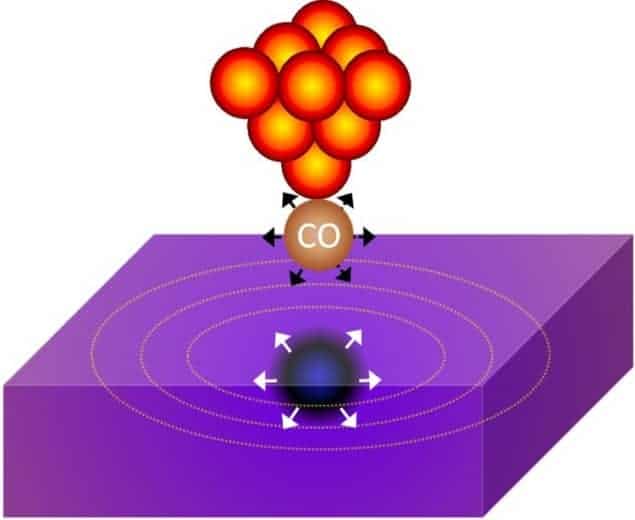
Heat can be conducted across a nanometre-sized vacuum gap – something that was deemed impossible until now. So say researchers at the Air Force Research Laboratory in Ohio who have found that the heat is transferred via an effect called “phonon tunnelling” in which quantized molecular vibrations, called phonons, appear to traverse the forbidden zone. The finding could be important for improving thermoelectric devices and for future nanoscale electronic circuits.
Heat flow between two objects via conduction can normally only occur when the objects are in contact with each other. This process occurs when phonons – quanta of vibrational energy – are transferred from the hotter object to the cooler one. Until now, such transfer was thought to be impossible between non-touching objects in a vacuum because the vacuum is a forbidden zone for phonons, explains team member Igor Altfeder.
The US team has now turned this idea on its head by actually measuring the heat flow between the nanosized platinum-iridium tip of a scanning tunnelling microscope held at room temperature and a cold surface made of gold. The two objects were separated in a vacuum by a 0.3 nm thin gap. The tip was held at room temperature while the gold surface was cooled to 90, 150 or 210 K.
Tunnelling, not radiating
The researchers found that the thermal energy transmitted through the tiny gap exceeds the Planck’s radiation by c2/v2 = 1010 (where c is the speed of light and v the speed of sound). According to their measurements, this means that the last atom at the nanosized tip dissipates heat an astonishing 1010 times faster than normal by generating phonons inside the gold. And, contrary to earlier hypotheses, the heat transfer is not due to the tip emitting radiation into the vacuum.
Altfeder and colleagues obtained their results by applying a range of voltages between the “hot” microscope tip and the cold surface. The researchers then recorded the current produced by electrons travelling across the gap. Because these electrons are directly affected by thermal vibrations in both materials, a measure of this current can be used to calculate the temperature of the tip apex. “The fact that this temperature nearly coincides with the temperature of the sample tells us that the energy escapes from the tip apex at an enormous rate,” Altfeder told physicsworld.com.
According to the AFRL team, the phonon tunnelling is driven by electric fields between the two objects. These electric fields, which exist because the work functions (the minimum of the tip and sample materials) are different, cause the microscope tip and its “image charge” inside a sample to vibrate in unison. In other words, the electric fields at the tip apex cause electrons in the top layer of the gold surface to vibrate at the same rate.
The result could be important for improving thermoelectric devices, interfacial transport at the micro scale and designing future molecular circuits, says Altfeder.
The work, which was reported in Physical Review Letters, backs up recent theoretical studies by Mika Prunnila and Johanna Meltaus of the VTT Technical Research Centre of Finland that predicted phonon tunnelling between piezoelectric materials. In an American Physical Society press release, Prunnila was quoted as saying that the new research might find applications in nanoelectronics, and in devices that harvest energy from temperature gradients.



